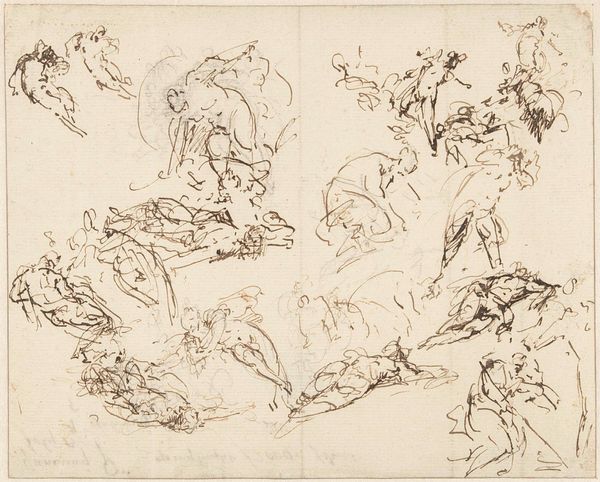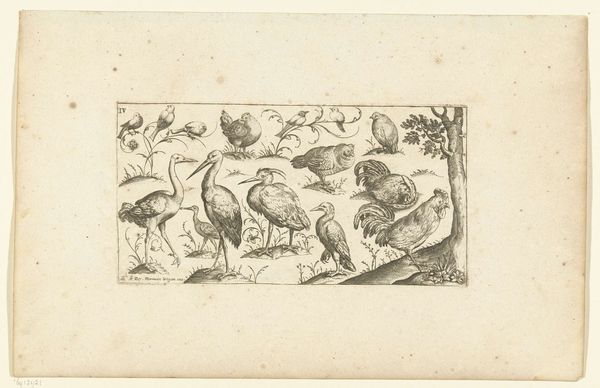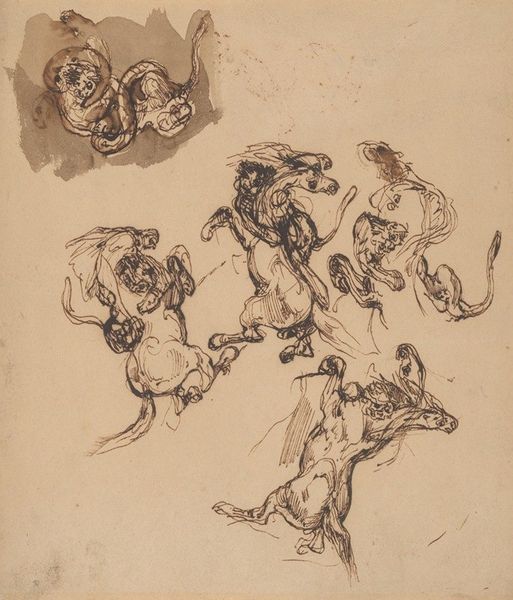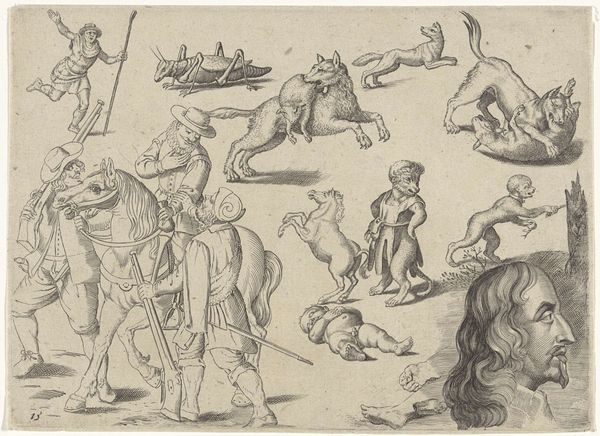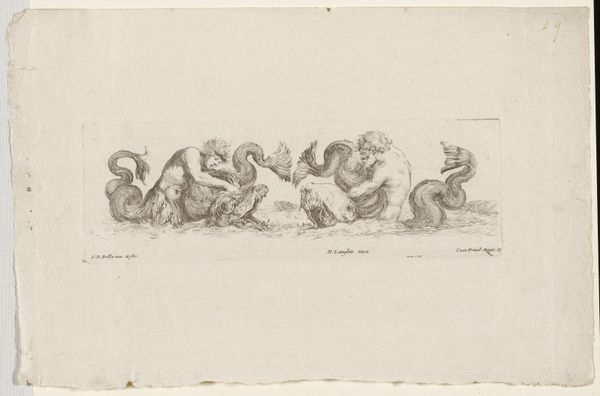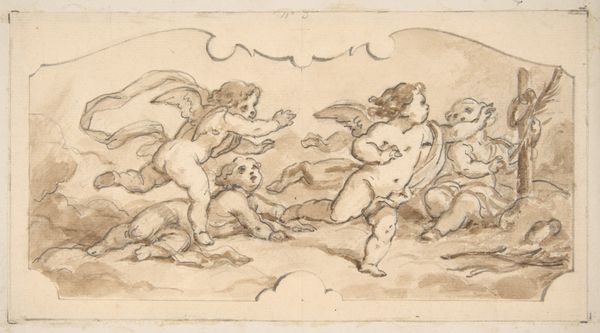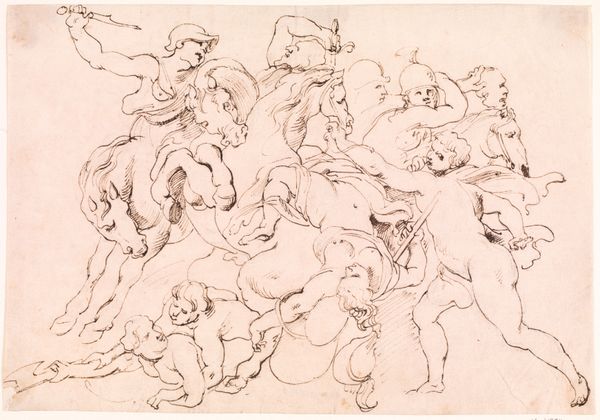
Dimensions: height 244 mm, width 399 mm
Copyright: Rijks Museum: Open Domain
Curator: What a fascinating menagerie! We’re looking at a drawing titled "Studies van dieren en halfwezens," created around 1765-1780, origin currently listed as anonymous, found right here at the Rijksmuseum. The artist used ink on paper to create these wonderful images. Editor: It feels like peeking into the artist's sketchbook, doesn't it? A casual assortment of creatures, some real, others mythical, all rendered in delicate shades of grey. There’s a kind of playful energy here, but also something slightly unsettling in the mixture of species. Curator: It is very interesting, and that kind of unsettling you speak of resonates. Given the period, these "halfwezens" – half-beings – can be interpreted in a variety of ways. From a historical perspective, these mythological hybrids were often allegorical representations, visual tools employed to explore contemporary ideas. Consider the socio-political issues simmering in Europe, how animals became symbolic carriers of human attributes, class, or social order... It reflects a period grappling with shifting boundaries. Editor: Precisely. And that interplay between the real and the imagined further emphasizes the fluidity of those boundaries, doesn't it? There’s this interesting tension – the hyper-realism of the animal studies contrasted with the fantastical creatures… A space for people to question. What does the juxtaposition of real with surreal evoke? What comment are we making on reality and the artifice of creation? Curator: Absolutely. Drawings like these offered artists an arena to probe the boundaries of acceptable imagery, critiquing social conventions through carefully constructed allegories. Think about how animals and hybrid beings were coded with specific meanings. This enabled artists to create layers of subtext in order to navigate the restrictive censorship prevalent during that era. This might even serve as a study sheet where apprentices in the atelier are taught, say, the muscle structure of a dog while being also challenged with visualizing bizarre hybrids. Editor: Which brings to mind the way these types of pieces served both academic purposes but also reflect the rise of Enlightenment ideals, the scientific classification mixing with the persistence of myth. A perfect illustration of the competing forces at play during this pivotal point in history. Curator: A blending of education with entertainment that encouraged public debate, even in the controlled settings of institutions, which really makes this piece an interesting snapshot into the artistic expression of that moment. Editor: Definitely. I’ll certainly be pondering this "snapshot" and its multiple layers for some time to come.
Comments
No comments
Be the first to comment and join the conversation on the ultimate creative platform.

